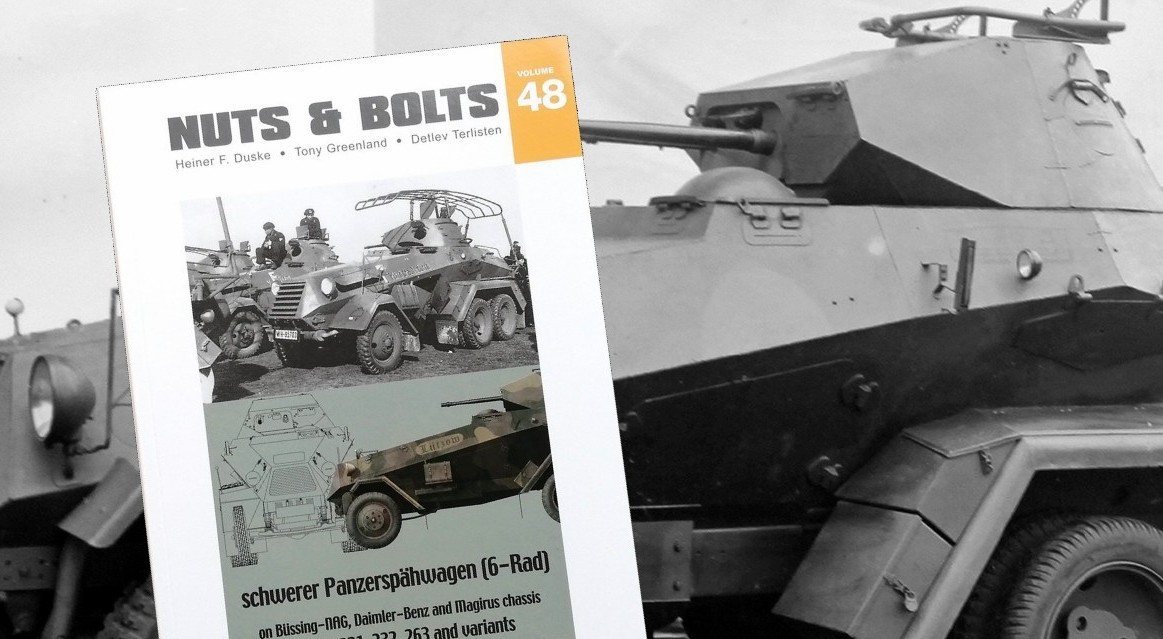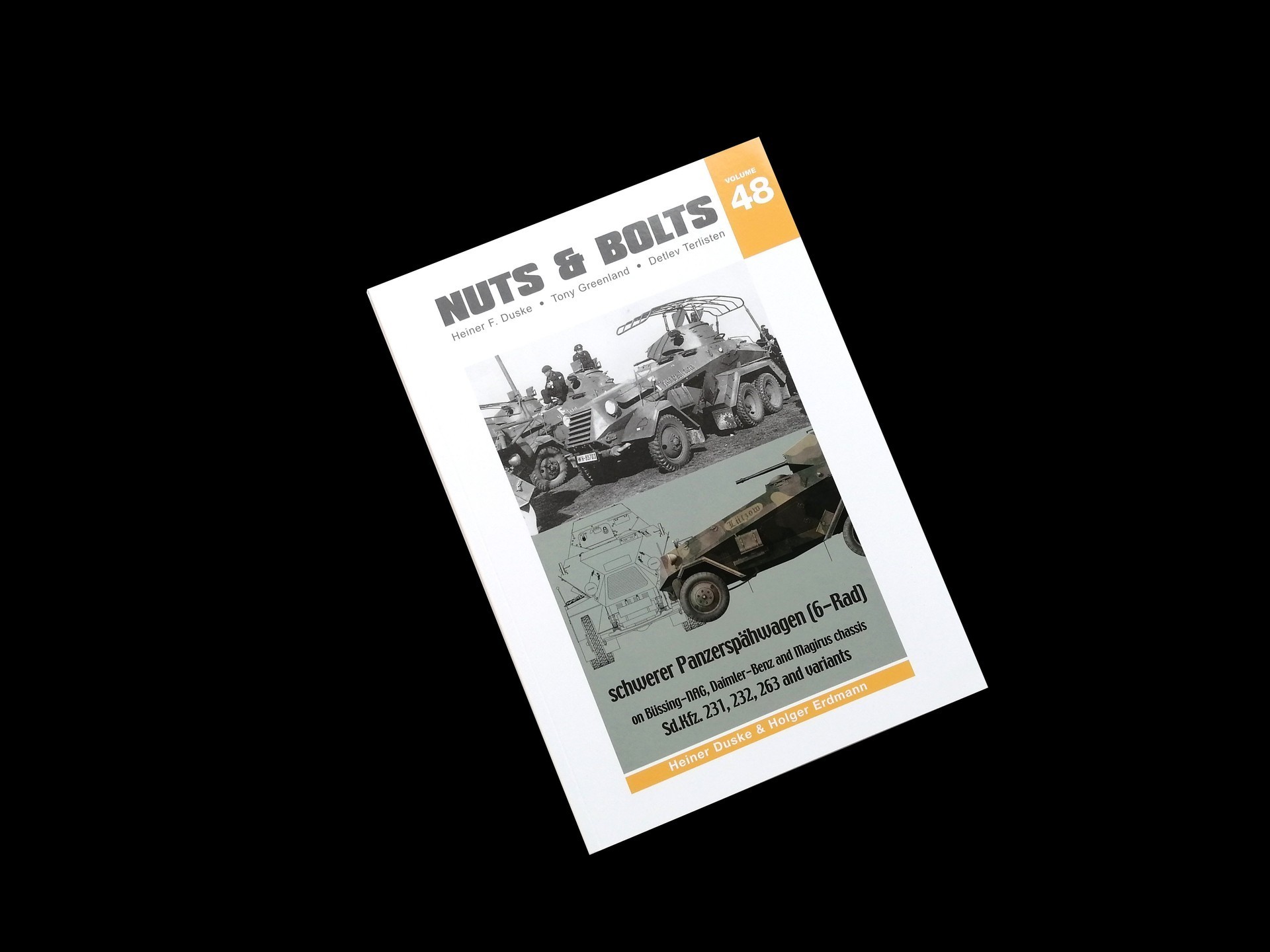
Volume 48 of the Nuts & Bolts series is devoted to the German heavy six-wheeled vehicles Sd. Kfz. 231, 232 and 263. It is an A4 portrait, softcover, book written by Heiner F. Duske and Holger Erdmann, with 232 pages. It is bilingual in English and German. After having dealt extensively with four- and eight-wheeled reconnaissance vehicles in previous volumes, this one rounds the set. The book follows the usual Nuts & Bolts content and structure, with some differences that we will see later on:
- Extensive information on the vehicles.
- Period photos.
- Drawings.
- Colour profiles.
- Photos of preserved vehicles.
- Scale models.
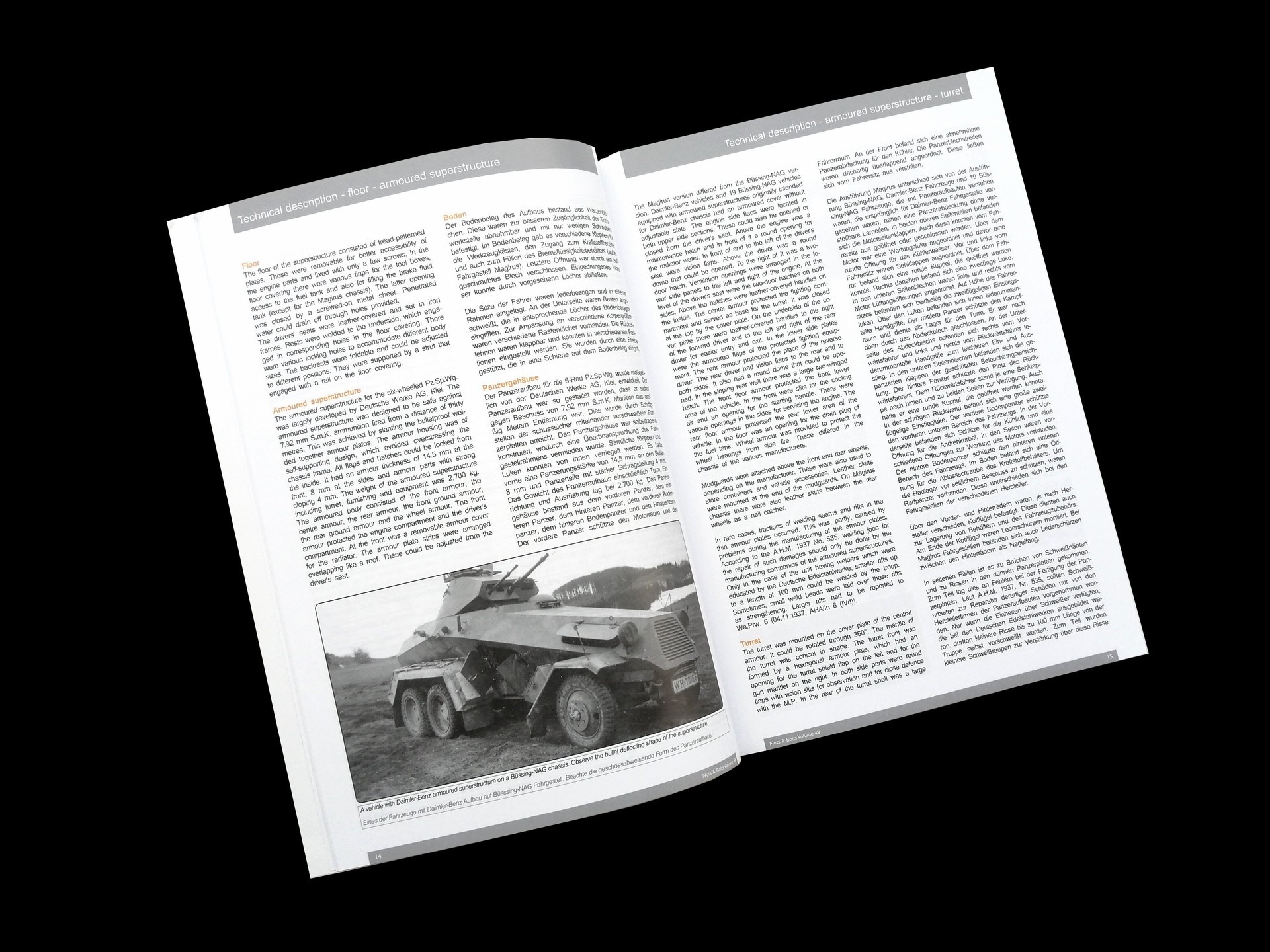
The first major section is fifty-two pages of predominantly text, with numerous supporting smaller photos and tables. The development of wheeled vehicles from truck chassis is covered in depth, together with the evolution of the designation and variants.
The following technical description is very detailed, with information about mechanical systems, armoured superstructure, weapons, radio and more. A wealth of interesting information. As usual, during production a number of changes were made to improve performance. These changes are detailed in a specific section. This is useful to identify the features of a model according to its time of manufacture or, conversely, to see what features are needed for a particular vehicle built at a time.
Organisation is another useful section explaining how the reconnaissance units were organised, how they were equipped and where the six-wheelers were allocated. As in other Nuts & Bolts books, there are two graphical tables representing the vehicles in a unit, and you can see what other vehicles accompanied the 231, 232 and 263.
It is followed by a brief history of the various units in which these vehicles served. The camouflage section, although well documented, is the standard and well known evolution of German camouflage so it brings nothing new to the table. The information on markings is scarce and mainly generic and the same for number plates. On the other hand, there are two lists of vehicle names, some also with number plates, as well as indications of the units to which they belonged.
Finally, there is an extensive bibliographical list consisting mostly of original documents.
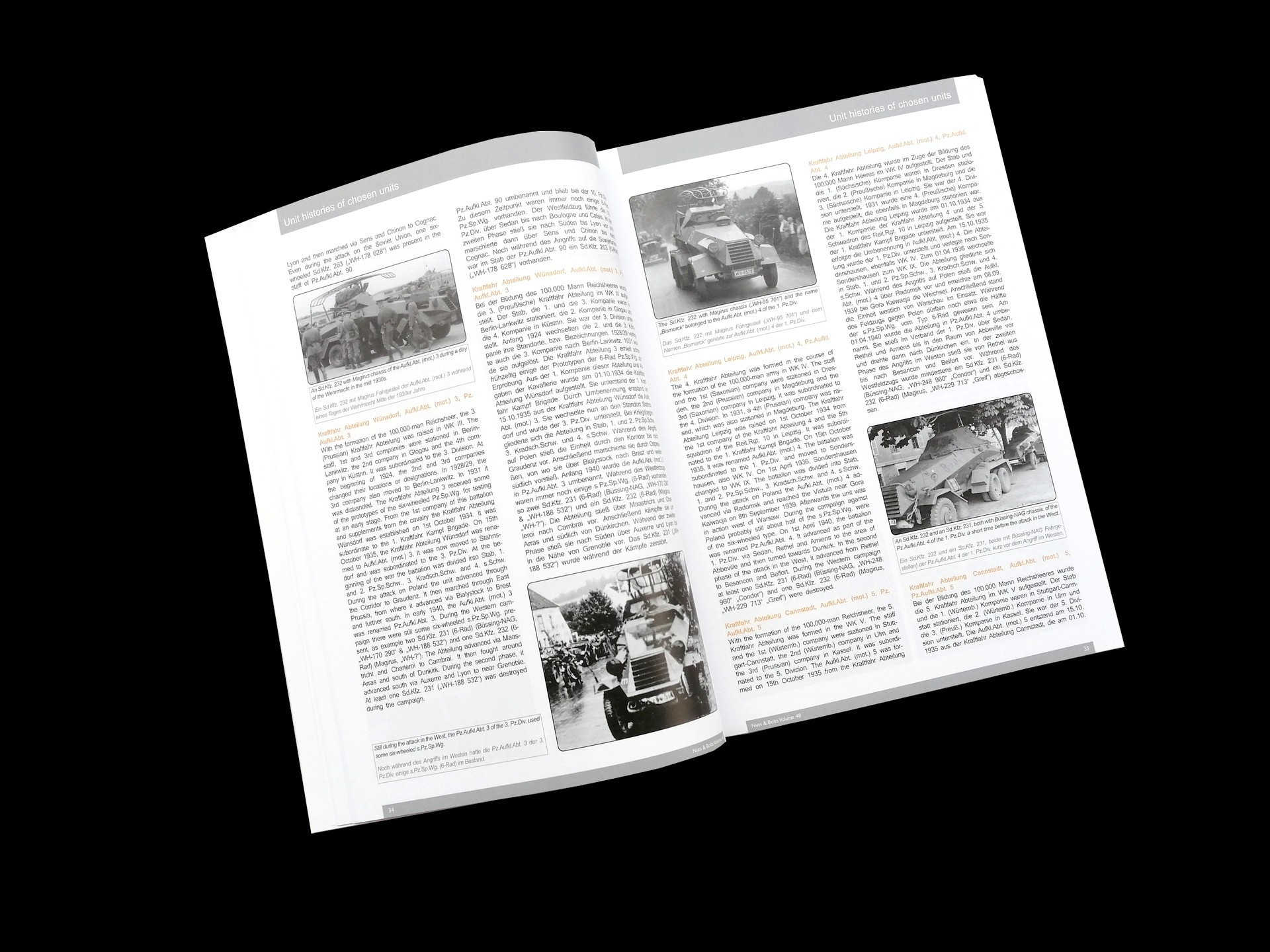
The section of period photos in this volume is really impressive, with 120 pages. In general there are about three photos per page, of good quality, crisp and clear. There are photos of the chassis, engine, brakes, suspension, dashboard, some from wartime manuals and also showing the prototypes. There are also numerous photos of the interior.
The photos are divided by period: pre-war Reichswehr and Wehrmacht, Poland, Western campaign and Eastern front. There are photos of all types: close-up or general views, with soldiers, in all weather, in war and during training, in service or destroyed.
The captions are informative with all the known details of each photo.
It is remarkable that with the few vehicles built the authors have found so many photos.
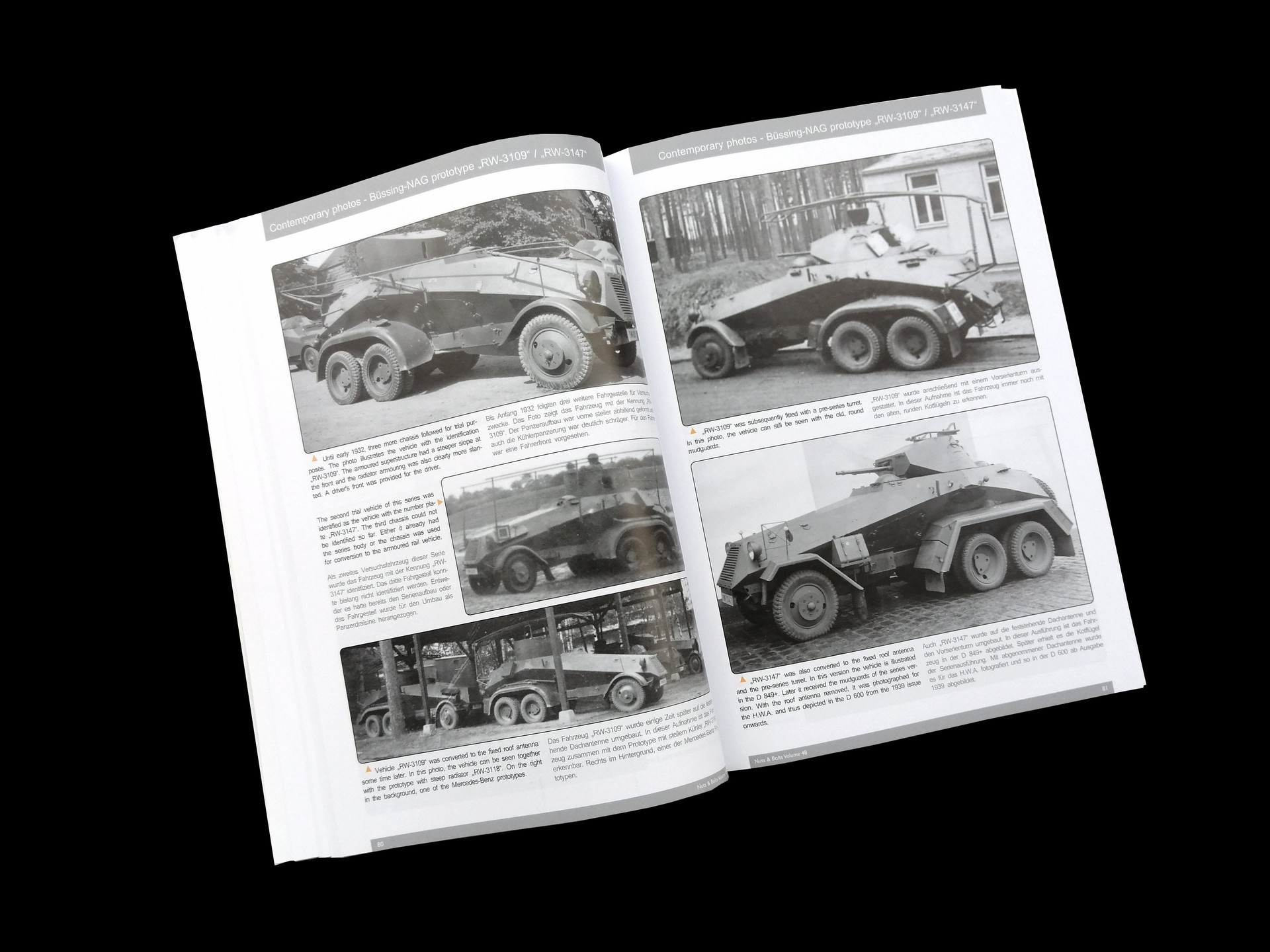
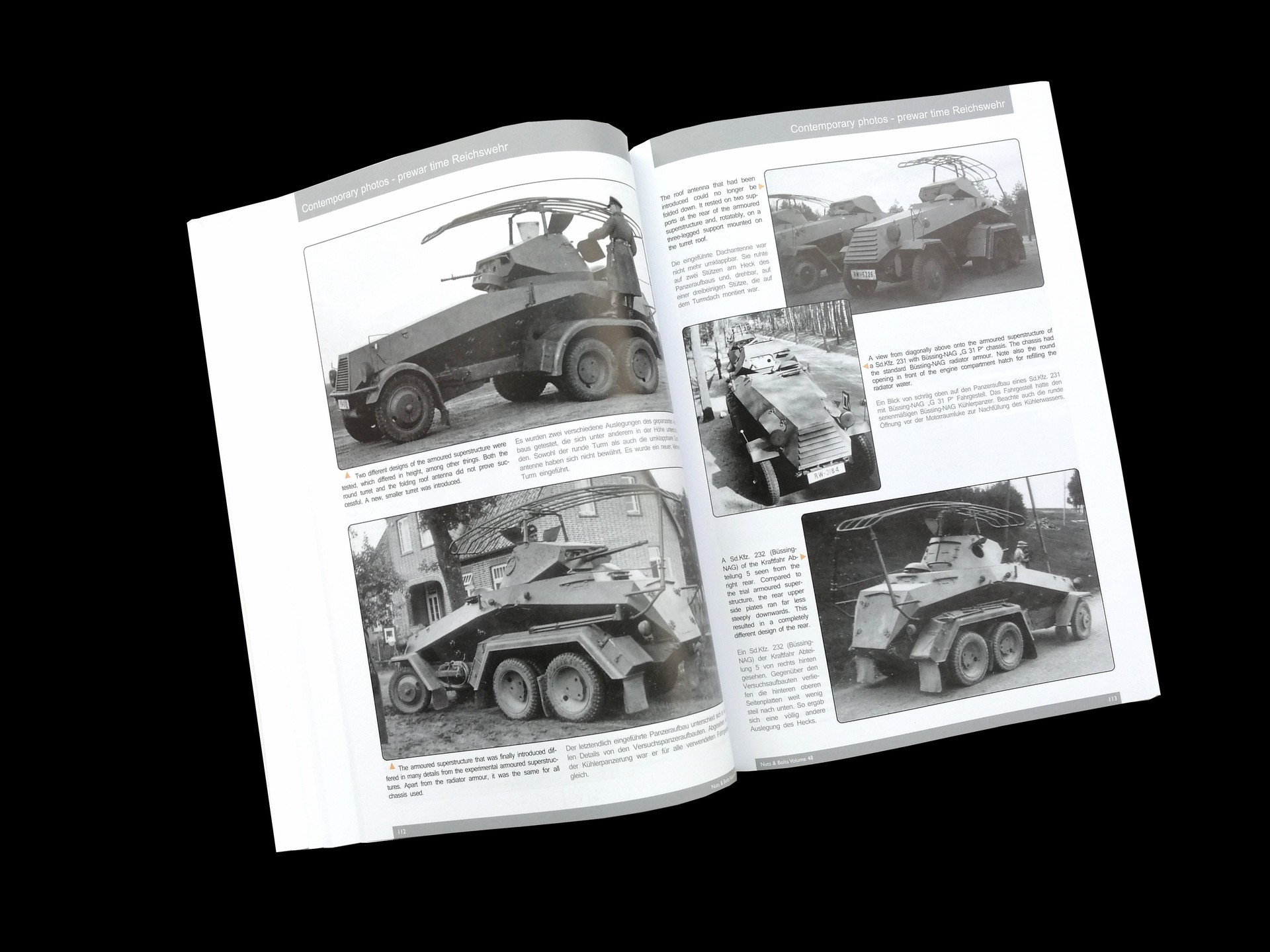
The eight pages of 1/35 drawings are by John Rue. There are side views of the prototypes, while for the production vehicles there are five views plus isometric views.
Two pages have bigger detail drawings of turrets and grilles.
These drawings are always useful for checking measurements and seeing differences between models and versions.
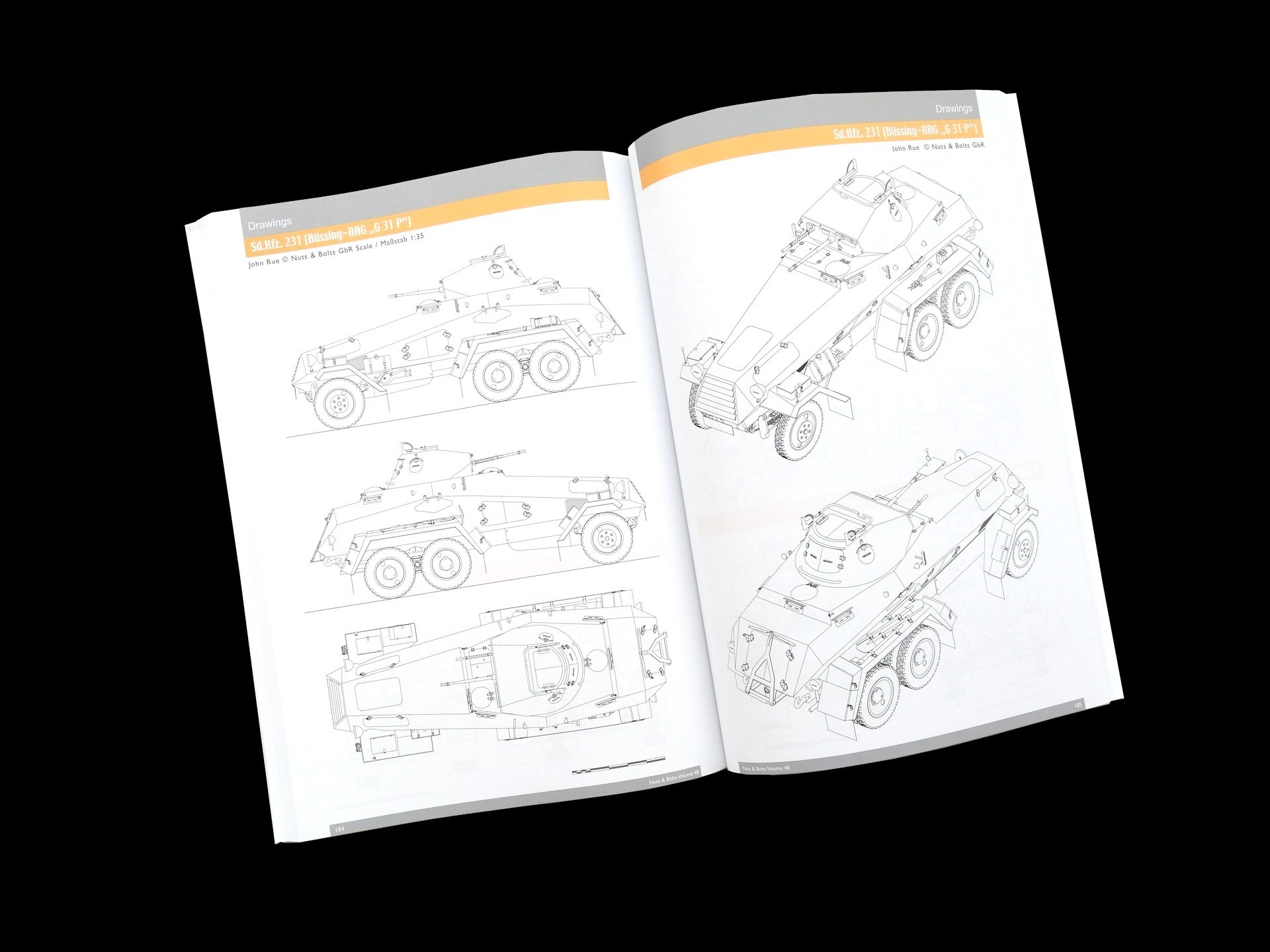
Carlos De Diego's beautiful colour profiles are shown with a thumbnail of the photo on which they are based. In total there are 18 profiles of different vehicles and camouflages.

The section of photos of preserved vehicles is one of the differences with previous volumes. Unfortunately, not a single vehicle of these types is known to have survived the war, so it is impossible to have modern photos. The authors have therefore included photos of a Büssing-NAG G 31 truck chassis that was also the basis for the 6-Rad. There are 22 pages of photos of this chassis as well as the engine, suspension, brakes and other components. Also included are photos of some components of the 8-Rad that were similar or the same as the 6-Rad, photos of the armament and radio equipment as well as a Kubel Mast 9m Ausf A. All these photos have extensive comments in the captions to explain the details seen.
Fortunately, as mentioned in the period photos section, numerous very clear period manual photos have been included there, which can make up for the lack of museum photos to a large extent.
Finally, the inside back cover contains three photos of a model made by Tony Greenland. The rest of the photos of this nice kit can be seen on the Nuts & Bolts website. These photos have been moved online in order to make room for the rest of the contents of the book, which in my opinion is a wise decision.

Conclusion
This new volume of Nuts & Bolts completes the series on German wheeled reconnaissance vehicles. As usual in this publisher's series, it contains a lot of information about the vehicles with their history, development, units that used them, colour profiles and 1/35 drawings. On this occasion and due to the fact that none of them are preserved, the museum photo section is limited to the chassis of an equivalent truck and some components used in other vehicles. However, the section of period photos is exceptional with 120 pages that in a way compensate for the previous one.
A highly recommended book to learn more about the 6-rad.











